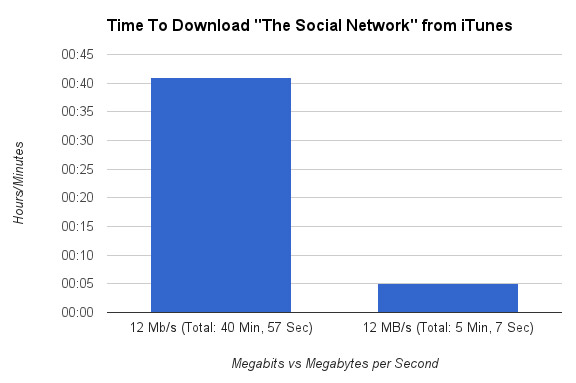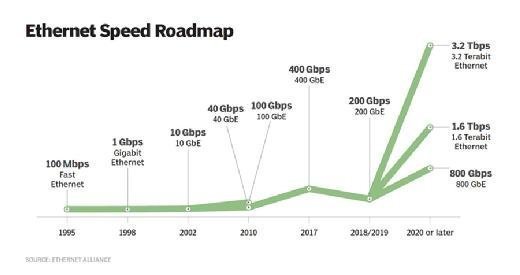Discovering the Partnership In Between Megabits Per Second and Download Speeds
Discovering the Partnership In Between Megabits Per Second and Download Speeds
Blog Article
Demystifying Megabits Per Second: A Guide to Choosing the Right Internet Plan
Understanding the concept of megabits per second (Mbps) is essential when choosing a web plan that aligns with your particular requirements. With the wide range of plans available, just how do you recognize which one is appropriate for you?
Recognizing Megabits Per Second

To understand the value of Mbps, it's important to acknowledge that it mirrors the optimum bandwidth available for data transfer. As an example, a plan supplying 100 Mbps permits the simultaneous transmission of data at that rate, though real speeds may differ as a result of network congestion, range from the provider, and the performance of your home network equipment.
Additionally, understanding the distinction in between megabytes and megabits is vital. While megabits signify the speed of data transfer, megabytes (1 byte = 8 little bits) gauge the size of files. Downloading and install a 100 MB file on a 100 Mbps link theoretically takes regarding 8 seconds, barring any type of disruptions.
Ultimately, picking a suitable Mbps rating based upon your home's internet use is important for guaranteeing an acceptable online experience.
Exactly How Internet Rate Impacts Tasks
Internet rate plays a critical function in determining just how efficiently people can participate in numerous online tasks. Different jobs require differing levels of data transfer, and understanding these demands can considerably boost individual experience. As an example, fundamental tasks like surfing sites or examining emails typically require lower rates, frequently around 1-5 Mbps. Nonetheless, streaming high-definition videos needs far more; a minimum of 25 Mbps is normally advised to ensure smooth playback without buffering.
Online video gaming, one more preferred activity, likewise depends heavily on internet speed. A stable connection of a minimum of 15-25 Mbps can offer a competitive edge and decrease latency, which is important for real-time interactions. On the other hand, video conferencing applications, progressively important for remote work, benefit from speeds of at the very least 3-8 Mbps for clear audio and video quality.
In houses with numerous users, synchronised activities can strain transmission capacity. In such instances, greater rates-- 50 Mbps or more-- are a good idea to suit diverse needs without a decrease in efficiency. Hence, understanding the connection in between internet rate and certain online tasks is critical for choosing a proper plan that meets individual or family members needs effectively.
Different Kinds Of Internet Strategies
Picking a proper internet plan requires an understanding of the numerous choices available in the market. Internet service providers (ISPs) commonly supply a number of kinds of strategies, each providing to various customer requirements and preferences.
Broadband strategies are one of the most typical, providing high-speed internet using wire or DSL links. These strategies appropriate for families that involve in several online tasks concurrently, such as video clip, streaming, and gaming conferencing - Megabits Per Second. Fiber-optic strategies, while less commonly available, use the fastest speeds and the most effective performance, making them ideal for tech-savvy customers or those with substantial bandwidth needs
Fixed wireless and satellite strategies serve locations where typical wired links are inaccessible or unreliable. While they can be advantageous for rural individuals, they often include greater latency and lower speeds compared to broadband alternatives.
Mobile hotspot plans enable users to access the internet with mobile networks, providing versatility for those that require internet on the go. advice Some ISPs provide tiered plans with varying speeds and data caps, enabling customers to choose a plan that aligns with their use patterns and spending plan. Understanding these different kinds of internet strategies is essential in making an informed decision.
Determining Your Rate Demands
Often examining your speed needs is vital for choosing a net plan that fits your lifestyle. Recognizing the requirements of your family or company can help in picking a proper package. resource Begin by reviewing the number of devices that will certainly be connected simultaneously. Each tool consumes transmission capacity, and high usage can bring about slow down performance.
Following, think about the tasks you take part in online. Standard tasks such as browsing and emailing normally require reduced speeds, around 1-5 Mbps. Streaming video clips in high definition, online gaming, or big documents downloads may require speeds upwards of 25 Mbps or even more.
Additionally, think about the variety of individuals. Megabits Per Second. A family with numerous individuals streaming content or pc gaming at the very same time will require substantially more data transfer than a single-user situation
Last but not least, bear in mind that internet speeds can be affected by aspects such as network blockage and the top quality of your router. By extensively assessing your speed needs, you can make an informed decision, making sure that your internet plan straightens with your everyday use and future needs.
Tips for Picking the Right Plan
Picking the right internet plan calls for mindful factor to consider of numerous essential elements to ensure it satisfies your needs. Analyze your use patterns-- whether you are streaming, pc gaming, or working from home-- because these activities demand different bandwidth levels. Typically, homes with several users or high-bandwidth activities will take advantage of higher-speed strategies.
Following, take a look at the data caps related to various strategies. Some service providers impose restrictions on information usage, which might lead to service charges or throttled speeds upon surpassing those limitations. Choosing about his a limitless data plan may be advantageous for hefty individuals.
Additionally, take into consideration the integrity of the company. Study client evaluations and inquire concerning the copyright's uptime and customer support efficiency. If it lacks reliability or support., a less expensive plan may not be a good bargain.
Last but not least, assess promotional deals and agreement terms. While initial costs can be enticing, understand the long-lasting prices and whether the plan calls for a prolonged agreement. By weighing these elements, you can make an educated choice that aligns with your internet requirements and budget plan, guaranteeing you choose one of the most suitable prepare for your household.

Conclusion
To conclude, comprehending megabits per second (Mbps) is vital for choosing a proper internet plan. Assessing family usage patterns and the demands of linked gadgets can substantially influence the choice of plan. By acknowledging the particular speed needs for different online tasks, people can make educated choices that enhance their total internet experience. Ultimately, picking a strategy with appropriate data transfer makes sure fulfillment and effectiveness in navigating the digital landscape.
Recognizing the idea of megabits per second (Mbps) is important when picking a web plan that aligns with your certain needs. Therefore, recognizing the connection in between internet speed and certain online activities is essential for selecting an ideal plan that fulfills specific or family demands successfully.
Mobile hotspot plans enable customers to access the internet through mobile networks, offering versatility for those that call for internet on the go. Some ISPs provide tiered plans with varying rates and information caps, making it possible for consumers to select a strategy that lines up with their usage patterns and budget plan.Frequently analyzing your rate needs is vital for selecting an internet plan that matches your way of living.
Report this page